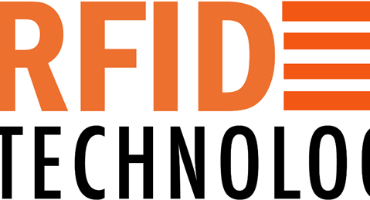Here are the true values of this integration:
Improved Inventory Accuracy and Reduced Shrinkage
Real-Time Inventory Tracking:
UHF RFID: Provides continuous, real-time tracking of inventory items, ensuring accurate counts and locations.
AI: Analyzes RFID data to detect discrepancies, predict inventory needs, and automate reorder processes.
Quantum Computing: Processes vast amounts of tracking data rapidly, enhancing the accuracy and timeliness of inventory information.
Shrinkage Reduction:
UHF RFID: Tracks each item uniquely, reducing theft, loss, and misplacement of inventory.
AI: Identifies patterns and anomalies indicating potential shrinkage events, enabling proactive measures.
Quantum Computing: Enhances the detection of complex patterns that may indicate theft or loss, improving preventive strategies.
Automated Inventory Audits:
UHF RFID: Facilitates automated and continuous inventory audits without manual intervention.
AI: Verifies inventory data against expected values, highlighting discrepancies instantly.
Quantum Computing: Increases the speed and accuracy of audit processes by rapidly analyzing large datasets.
Optimizing Warehouse Operations with Real-Time Data and AI-Driven Insights
Enhanced Operational Efficiency:
UHF RFID: Streamlines the tracking of goods throughout the warehouse, improving picking, packing, and shipping processes.
AI: Analyzes operational data to optimize workflows, reduce bottlenecks, and improve resource allocation.
Quantum Computing: Solves complex logistical problems quickly, optimizing warehouse layouts and workflows for maximum efficiency.
Predictive Maintenance of Warehouse Equipment:
UHF RFID: Monitors the status and usage of warehouse equipment in real-time.
AI: Predicts maintenance needs based on equipment usage data, preventing unexpected breakdowns.
Quantum Computing: Enhances predictive models, providing more accurate maintenance schedules and reducing downtime.
Optimized Resource Allocation:
AI: Allocates labor and equipment based on real-time demand and historical data.
Quantum Computing: Improves the optimization of resource allocation, ensuring the most efficient use of available resources.
Improved Decision-Making:
AI: Provides actionable insights from real-time data, supporting informed decision-making.
Quantum Computing: Accelerates data analysis, enabling rapid responses to changing conditions and demands.
Enhanced Tracking of Shipments and Delivery Vehicles
Real-Time Shipment Tracking:
UHF RFID: Provides real-time visibility into the location and status of shipments throughout the supply chain.
AI: Analyzes tracking data to optimize routes, predict delivery times, and identify potential delays.
Quantum Computing: Processes complex tracking data rapidly, enhancing the accuracy and timeliness of shipment information.
Optimized Delivery Routes:
AI: Optimizes delivery routes based on real-time traffic data, weather conditions, and delivery schedules.
Quantum Computing: Enhances route optimization algorithms, providing the most efficient paths and reducing delivery times.
Improved Customer Satisfaction:
UHF RFID: Ensures accurate and timely information on shipment status, improving transparency.
AI: Provides predictive delivery times and proactive notifications to customers about delays.
Quantum Computing: Enables real-time adjustments to delivery plans, ensuring timely deliveries and enhancing customer satisfaction.
Overall Operational Efficiency and Competitive Advantage
Cost Reduction:
Efficient Inventory Management: Reduces costs associated with overstocking, stockouts, and manual inventory counts.
Optimized Warehouse Operations: Lowers operational costs through improved efficiency and resource allocation.
Reduced Shrinkage: Minimizes losses due to theft and misplacement.
Scalability and Flexibility:
UHF RFID and AI: Solutions that scale with the business, adapting to growing volumes and complexity.
Quantum Computing: Provides the computational power to handle large-scale operations and complex logistical challenges.
Enhanced Competitive Advantage:
Innovation Leadership: Positions companies as leaders in technological innovation within the logistics and warehousing industry.
Agile Market Response: Improves the ability to respond quickly to market changes and customer demands.
Sustainability:
Optimized Resource Use: Reduces waste and improves the efficiency of resource utilization.
Reduced Carbon Footprint: Optimized delivery routes and efficient warehouse operations contribute to lower carbon emissions.
The integration of UHF RFID, AI, and Quantum Computing in logistics and warehousing significantly improves inventory accuracy, reduces shrinkage, optimizes warehouse operations, and enhances the tracking of shipments and delivery vehicles. These benefits lead to greater operational efficiency, cost savings, improved customer satisfaction, and a stronger competitive position.



